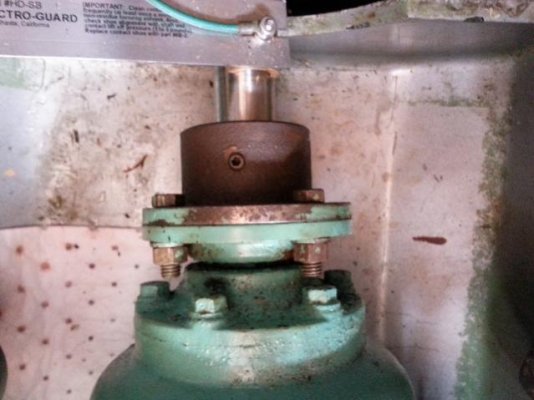Bob Cofer
Guru
Close call today on Ebbtide.
Started the engine and was warming in reverse. Engine room access was open and I was checking for leaks and just looking around. All of the sudden there was a bang and the lines went slack. What the heck!
Turns out the shaft pulled out of the coupling from the stress of being in reverse. At some point in the past the shaft must have been removed and when reinstalled the set screws were not in the dimples just tightened to the shaft. The key fell out into the bilge pan.
Luckily it only pulled out of the coupling about an inch and a half and was not damaged.
Pulled the coupling off the transmission and managed to get it back on the shaft and properly secured. Blue lock tight on the set screws. A bucket of sweat later and I managed to get it all realigned and bolted back together.
I do a thorough pre underway check but this was not on my list. Do yourselves a favor and take a look at your shaft couplings once in a while.

Bob
Started the engine and was warming in reverse. Engine room access was open and I was checking for leaks and just looking around. All of the sudden there was a bang and the lines went slack. What the heck!
Turns out the shaft pulled out of the coupling from the stress of being in reverse. At some point in the past the shaft must have been removed and when reinstalled the set screws were not in the dimples just tightened to the shaft. The key fell out into the bilge pan.
Luckily it only pulled out of the coupling about an inch and a half and was not damaged.
Pulled the coupling off the transmission and managed to get it back on the shaft and properly secured. Blue lock tight on the set screws. A bucket of sweat later and I managed to get it all realigned and bolted back together.
I do a thorough pre underway check but this was not on my list. Do yourselves a favor and take a look at your shaft couplings once in a while.

Bob




